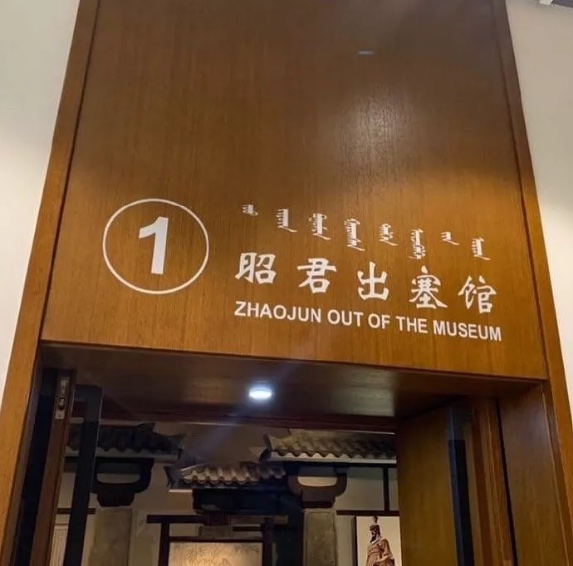Archive for Transcription
February 28, 2022 @ 11:50 pm· Filed by Victor Mair under Language and music, Transcription, Translation
Questions from Nancy Friedman:
I'm writing something about the Best Picture nominee "Drive My Car," whose Japanese title is "Doraibu mai kā." Is there a name for this sort of transliteration from English into Japanese? Why would a Japanese writer–the source story was written by Haruki Murakami–choose a transliteration instead of a translation? (Beatles reference, maybe?)
From David Spafford:
It’s definitely a Beatles reference. I don’t know this particular Murakami work, but he’s well known for his Beatles references: think "Noruuei no mori", which is an obvious reference / mistranslation of the Beatles song, "Norwegian wood".
Read the rest of this entry »
Permalink
February 13, 2022 @ 4:49 pm· Filed by Victor Mair under Language and food, Topolects, Transcription
Part of a menu in Taiwan:
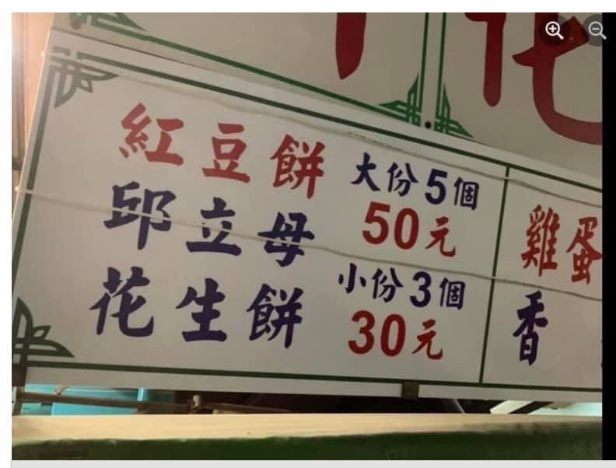
(Provided by Grace Wu)
Read the rest of this entry »
Permalink
August 23, 2021 @ 4:30 am· Filed by Victor Mair under Borrowing, Errors, Etymology, Language and history, Transcription
[This is a guest post by Penglin Wang]
The Chinese transcription of foreign words has made a unique and valuable contribution to our understanding of linguistic situations in early Inner Asia, but it was sometimes inevitably fraught with logographic confusion and scribal errors. Even given quite advanced word-processing and printing in modern times, one can hardly prevent miswriting or misspelling from happening. In ancient China, presumably, it was historians and other authors who heard foreign words spoken and jotted them down, and then further changes developed through the involvement of scribes, typographers, and printers, with each possibly committing their own miswritings and infelicities. It is therefore necessary to reinterpret certain transcriptions on the basis of the known philological and linguistic relevance of what came to be written down.
Read the rest of this entry »
Permalink
August 10, 2021 @ 6:30 am· Filed by Victor Mair under Language and food, Lost in translation, Names, Transcription
That's the name of a delectable Chinese nosh made famous by this pastry shop. The name of the snack in Chinese is "ròusōng xiǎobèi 肉鬆小貝" ("pork floss little cowry / cowrie"), after its shape and the main ingredient of the covering in which it is encased.
If you look up the English name in this encyclopedia entry, it gives "Pork floss Beckham". What? How did that happen?
Read the rest of this entry »
Permalink
August 5, 2021 @ 11:58 pm· Filed by Victor Mair under Decipherment, Epigraphy, Transcription, Writing systems
The following are photographs of a supposedly Śāradā / Sarada / Sharada inscription, sent to me by an anonymous correspondent:
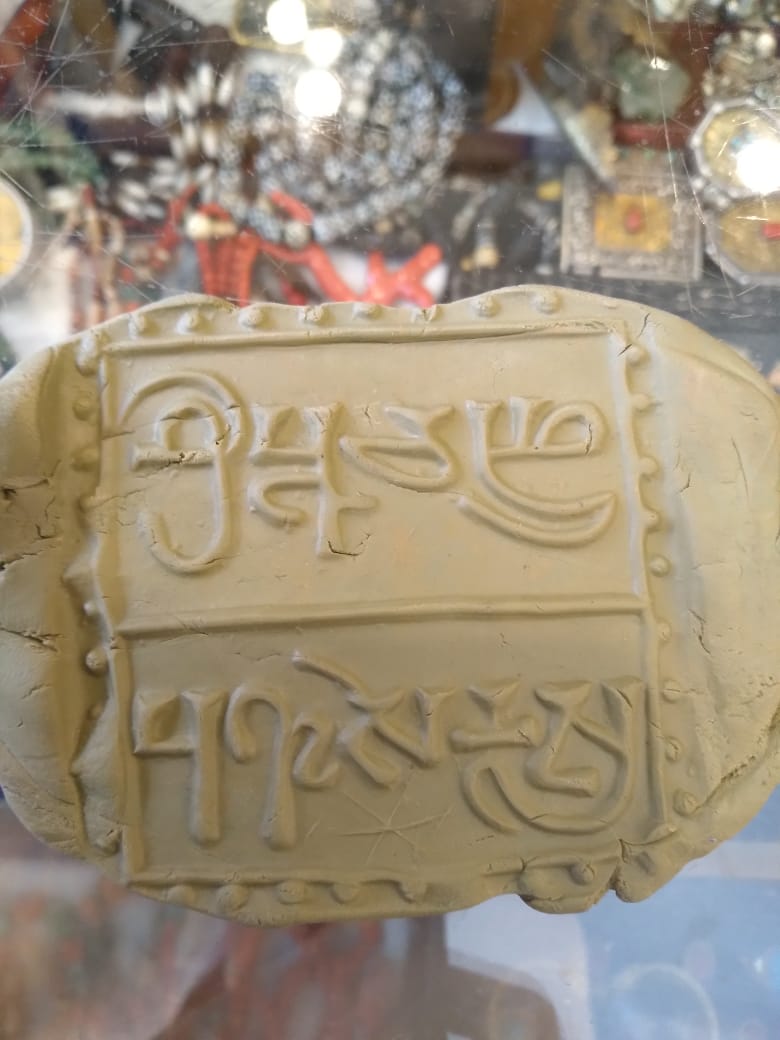
Read the rest of this entry »
Permalink
June 23, 2021 @ 12:23 am· Filed by Victor Mair under Language and art, Language and religion, Transcription, Writing, Writing systems
[This is a guest post by Jichang Lulu]
In “Ornamental Manchu: the lengths to which a forger will go” (LL, April 24), Professor Mair discussed a handscroll with faux-Manchu inscriptions. Although the writing clearly imitated Manchu, the imitation was so liberal and the forger so unfamiliar with the Manchu script that hardly any word was intelligible even to eminent Manjurists consulted for the post.
As a non-Manjurist, I found the text only more puzzling, but was able to identify its model by comparing a a conjectural reading of a non-recurring word in it to a published text of a Manchu translation of the Heart Sutra (Fuchs, Die mandjurischen Druckausgaben des Hsin-ching (Hṛdayasūtra) (non legi), transcribed in Hurvitz, “Two polyglot recensions of the Heart Scripture”, J Indian Philos 3:1/2 (1975)). That guess I shared in a comment embedded in the post, elaborated under it with the likely source text. That presumably settled the question, but, with the source given in transliteration only, didn’t make it any easier to appreciate the hilarious cavalierness of the copy without an ability to mentally untransliterate it back into the Manchu script.
Professor Kicengge has now compared the text to a Manchu-script rendition of the sutra and composed an image that juxtaposes the copy to its model. The juxtaposition verifies the identification of the source text: not only does the text (very roughly) match, so does its division into columns.
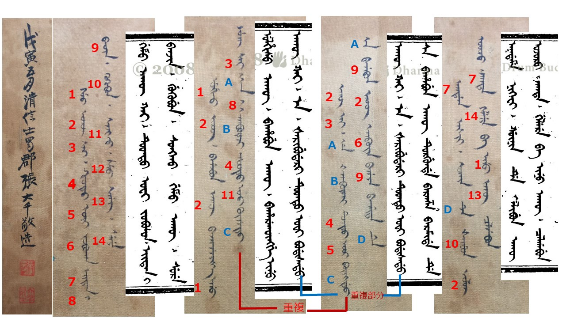
The handscroll’s faux Manchu and its model, juxtaposed. Supplied by Kicengge.
Read the rest of this entry »
Permalink
April 16, 2021 @ 10:57 am· Filed by Victor Mair under Borrowing, Language and sports, Lexicon and lexicography, Transcription, Translation
Recently published in the Wall Street Journal:
"Tokyo’s Anti-Olympic Movement Ask: Why Haven’t the Games Been Canceled? The Japanese public remains opposed to the Tokyo Olympics as coronavirus cases surge across the country", by Alastair Gale, WSJ, April 14, 2021
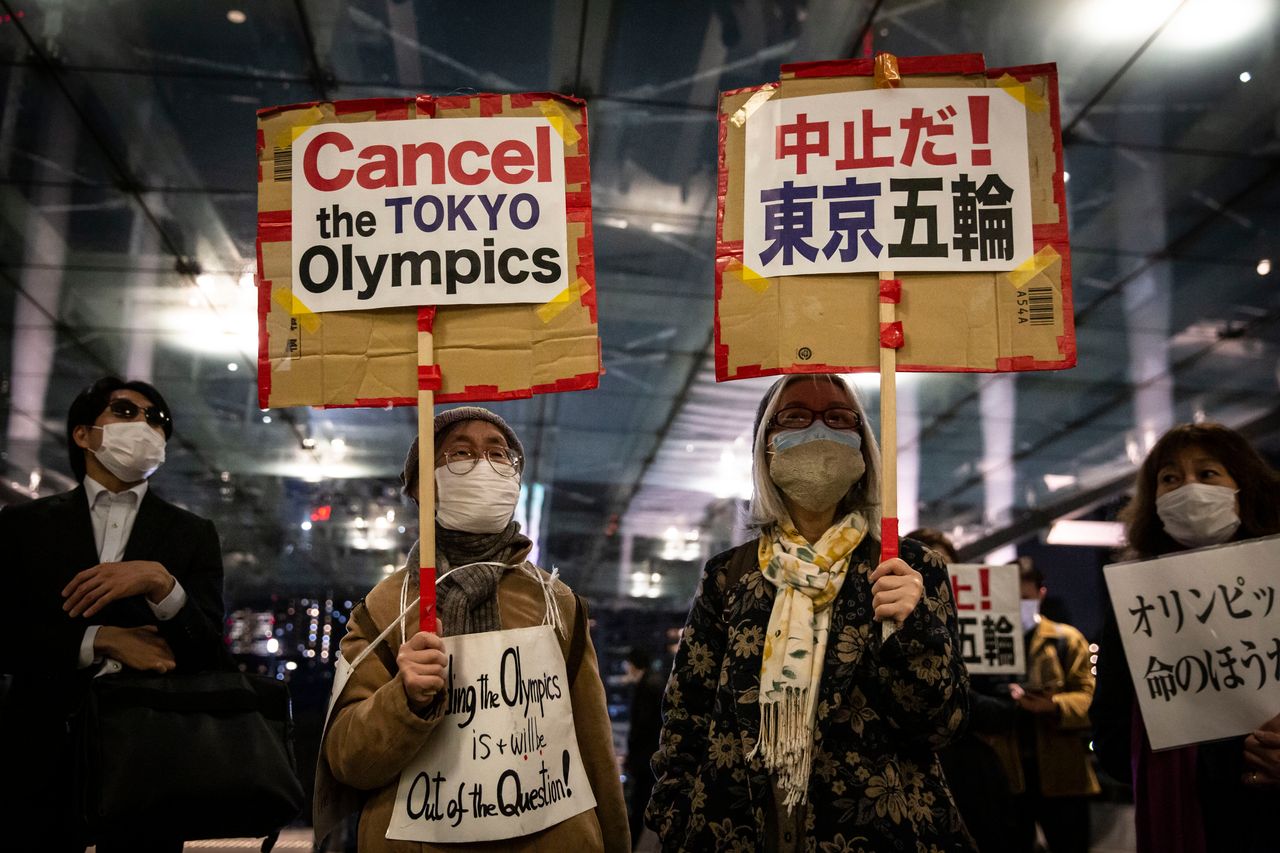
Read the rest of this entry »
Permalink
April 11, 2021 @ 9:02 am· Filed by Victor Mair under Alphabets, Language acquisition, Language and education, Language teaching and learning, Spelling, Transcription, Writing systems
A graduate student from the PRC told me that the situation regarding instruction in Hanyu Pinyin has become quite chaotic in recent years in China. Hànyǔ Pīnyīn 汉语拼音 ("Sinitic Spelling"), or Pīnyīn 拼音 ("Spelling") for short, is the official PRC Romanization of Modern Standard Mandarin (MSM), i.e., Pǔtōnghuà 普通话.
For many decades, it used to be that all students — beginning in first grade of elementary school — learned to read and write via Pinyin. Indeed, under the program known as "Zhùyīn shìzì, tíqián dú xiě 注音识字,提前读写" ("Phonetically Annotated Character Recognition Speeds Up Reading and Writing"), or "Z.T." for short, which actively encouraged children to use Pinyin Romanization for characters they were unable to write, the promotion of Pinyin continued well into upper grades. See "How to learn to read Chinese" (5/25/08). In the last few years, however, it seems that instruction in Pinyin — at least in some schools — has become "optional". Some teachers are simply not teaching the basics of pinyin. As a result, many students are no longer competent in it, so that when they get to the dreaded gaokao (National College Entrance Examination [NCEE]), where mastery of pinyin is required, they're not prepared for that part of the exams. Parents are complaining.
Read the rest of this entry »
Permalink
March 4, 2021 @ 7:37 am· Filed by Victor Mair under Borrowing, Etymology, Lost in translation, Names, Transcription
[This is a guest post by S. Robert Ramsey]
You’ve probably heard Korea referred to as the “Land of the Morning Calm.” That’s a nickname for Korea that’s been used in the West at least since the 19th century.
And perhaps because Koreans agree that “Morning Calm” sounds mystical and romantic, it’s been picked up lately—often for commercial purposes—in South Korea, too. Korean Airlines, for example, has frequent flier perks for members of its “Morning Calm Club.” In 1996, an arboretum east of Seoul was given the name, “Garden of Morning Calm.”
But the nickname is a chimera, the result of a mistake—and probably one made by some starry-eyed Westerner infatuated by the mysterious Orient. ‘Morning Calm’ is a mistranslation of an ancient name for Korea, a name known only from ancient Chinese records.
Read the rest of this entry »
Permalink
February 12, 2021 @ 9:35 pm· Filed by Victor Mair under Language and food, Signs, Transcription
Sunny Jhutti sent in this photograph of an Indian shop sign:

Read the rest of this entry »
Permalink
December 22, 2020 @ 1:49 pm· Filed by Victor Mair under Bilingualism, Code switching, Lost in translation, Transcription
Liwei Jiao sent in this screenshot:

Read the rest of this entry »
Permalink
December 17, 2020 @ 4:31 pm· Filed by Victor Mair under Borrowing, Etymology, Reconstructions, Transcription
I've long been deeply intrigued by the word "macaque". It's an odd-looking term with a murky history, but somehow it just seems to fit the creature that it designates.
American Heritage Dictionary of the English Language, 5th ed.:
French, from Portuguese macaco, of Bantu origin; akin to Kongo makako, monkeys : ma-, pl. n. pref. + -kako, monkey.
Online Etymology Dictionary:
East Indian monkey, 1757, from French macaque, from Portuguese macaco "monkey," a Bantu word brought from Africa to Brazil (where it was applied 17c. to a type of monkey there).
Read the rest of this entry »
Permalink




